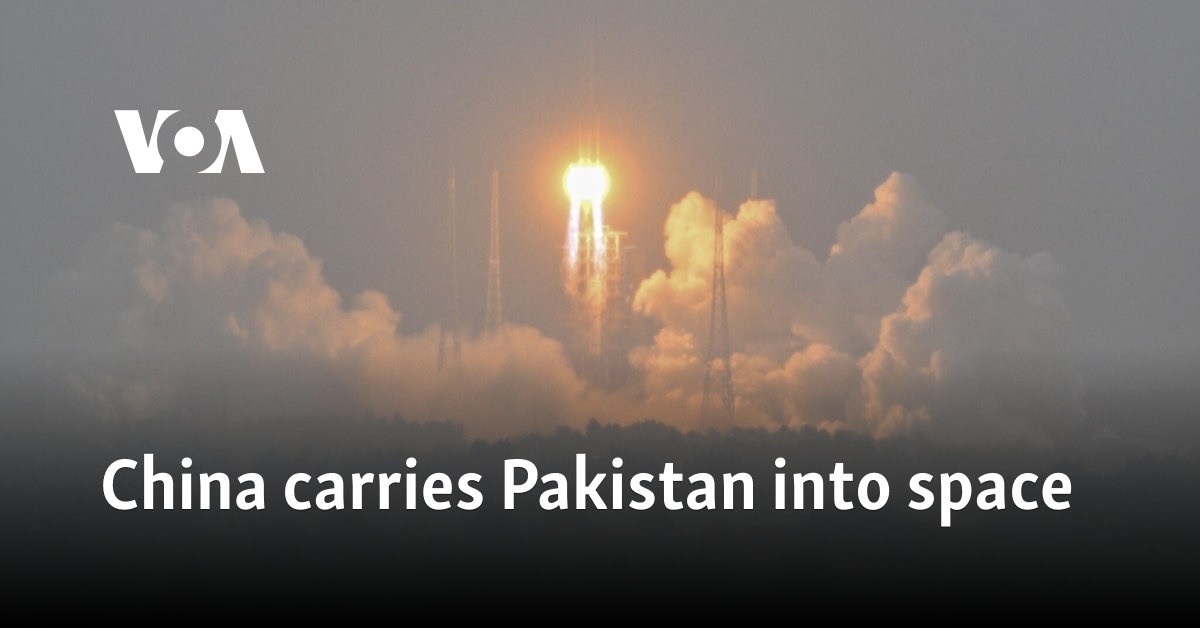
This article was originally published on VOA News - Technology. You can read the original article HERE

Pakistan on Friday witnessed the launch of its first lunar satellite aboard China’s historic mission to retrieve samples from the little explored far side of the moon in a technologically collaborative mission that signals deepening ties between the countries.
China’s largest rocket, a Long March-5, blasted off from the Wencheng Space Launch Center on Hainan Island at 09:27 UTC, ferrying China’s 8-metric-ton Chang’e-6 probe.
If successful, the uncrewed mission will make China the first country to retrieve samples from the moon’s largely unexplored South Pole, also known as the “far side” of the moon that is not visible from Earth.
Chang’e-6 will spend 48 hours digging up 2 kilograms of surface samples before returning to a landing spot in Inner Mongolia.
In 2018, China achieved its first unmanned moon landing on the far side with the Chang'e-4 probe, which did not retrieve samples. India became the first country to land near the moon’s South Pole in August with its Chandrayaan-3.
Chang’e-6 is carrying cargo from Pakistan, Italy, France and the European Space Agency.
According to the Institute of Space Technology (IST) in Islamabad, Pakistan’s lunar cube satellite named ICUBE-Qamar (or ICUBE-Q for short) will be placed into lunar orbit within five days, circling the moon for three to six months, photographing the surface for research purposes.
IST engineers say ICUBE-Q is also designed to "obtain lunar magnetic field data; establish a lunar magnetic field model and lay the foundation for subsequent international cooperation on the moon.”
IST developed the iCUBE-Qamar satellite in collaboration with the country’s space agency SUPARCO and China’s Shanghai University. Qamar, which means moon in Urdu, is the nuclear-armed South Asian nation’s first mission in space.
The iCUBE-Q orbiter has two optical cameras that will gather images of the lunar surface.
'Milestone'
The mission’s launch from China was carried live on Pakistan state television.
Calling it a "milestone,” Prime Minister Shehbaz Sharif said it would help the country build capacity in satellite communications and open new avenues for scientific research, economic development and national security, according to a statement issued by the Ministry of Information.
The Pakistan-China friendship, Sharif said, has “gone beyond borders to reach space,” according to the official statement.
Beijing is one of Islamabad’s closest allies. Pakistan is home to the China-Pakistan Economic Corridor, a multibillion-dollar development project that is part of Beijing’s Belt and Road global infrastructure initiative.
Pakistan’s navy in late April launched its first Hangor-class submarine, built jointly with China, with a ceremony in China’s Wuhan province.
According to the Washington-based U.S. Institute of Peace, Beijing is Islamabad’s leading supplier of conventional and strategic weapons platforms. China is also the dominant supplier of Pakistan’s higher-end offensive strike capabilities, the report found.
Some information for this report came from Reuters.
This article was originally published by VOA News - Technology. We only curate news from sources that align with the core values of our intended conservative audience. If you like the news you read here we encourage you to utilize the original sources for even more great news and opinions you can trust!










Comments